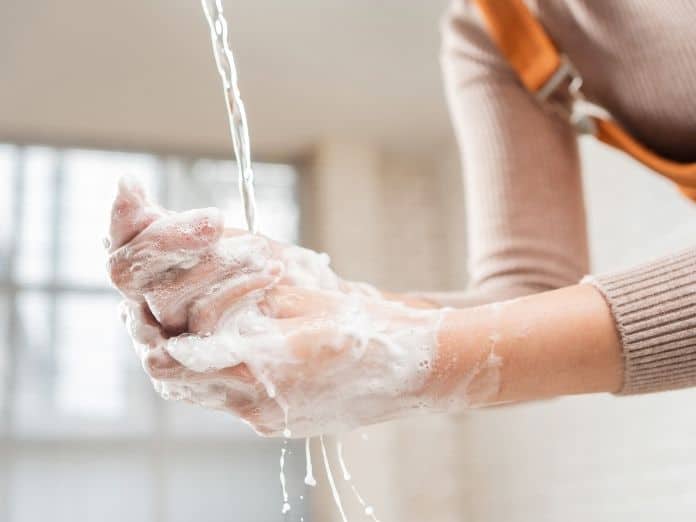Everyone has learned a lot about the proper way to wash their hands as precautions about exposure to coronavirus continue. It’s not all about singing “Happy Birthday” twice: friction is critical for washing your hands.
Friction is the resistance between two surfaces when they move against each other. The friction between glaciers and mountains created valleys and cliffs. Friction created by tumbling media within rotary or vibratory tumblers polishes metal. Friction grinds grain between stone surfaces. And friction, along with soap, is what makes washing your hands an effective way to remove dirt, grease, and germs.
It may surprise you the temperature of the water you use to wash your hands and the type of soap you use is far less important than working up a good lather by rubbing your hands together when washing. Water alone can’t remove skin’s natural oils that germs and dirt cling to. Soap breaks down the oils, but it’s the friction of rubbing the hands together that lifts the dirt and germs and removes them.
It’s important to reach all the surfaces of the hands, especially under the nails, between the fingers, and the fingertips. Take your pick of two “Happy Birthdays” or one slow “ABC” song to keep rubbing and scrubbing for 20-30 seconds. Because fingers come into contact with the most surfaces, wash your hands with fingers pointing downward.
Soap, water, and friction are more effective than hand sanitizer in removing germs from hands. Hand sanitizer must stay on the hands and then evaporate to kill germs, and it’s often formulated with moisturizers or other slick substances that reduce friction. It’s best to wash first, then use sanitizer to kill off any stubborn germs left behind. Some germs only come off with a good washing.
The proper sequence for washing hands is to wet them with running water (don’t dip then in a basin, where more germs may lurk). Work up a good lather, hum your song and be sure to scrub every part of your hands. Then rinse and dry with a paper towel. Turn the faucet off with a sleeve-covered elbow or a paper towel to prevent recontaminating your hands, and don’t touch the inside or other surfaces of the sink when your hands are clean. If you must open a door to leave the bathroom or kitchen where you’re washing your hands, use a paper towel. Make sure your hands are thoroughly dry, because wet hands pick up more germs.
Wash hands thoroughly and often, and remember to rub, rub, rub. It’s that friction that lifts germs off the skin’s surface, into the soap lather you’ll rinse off when you’re done.






